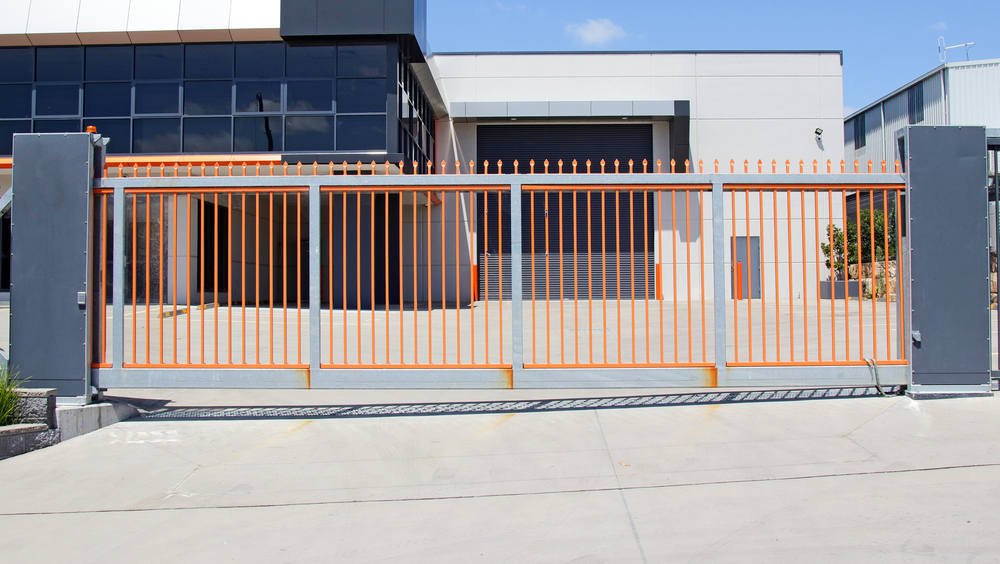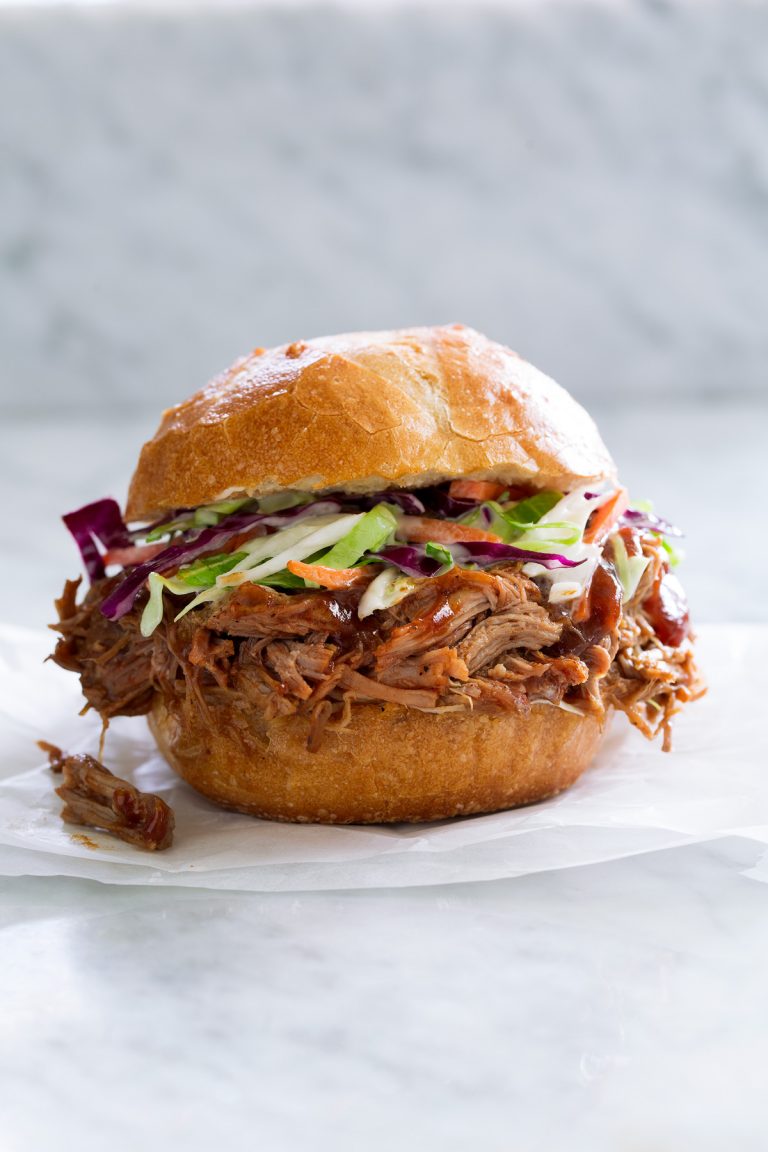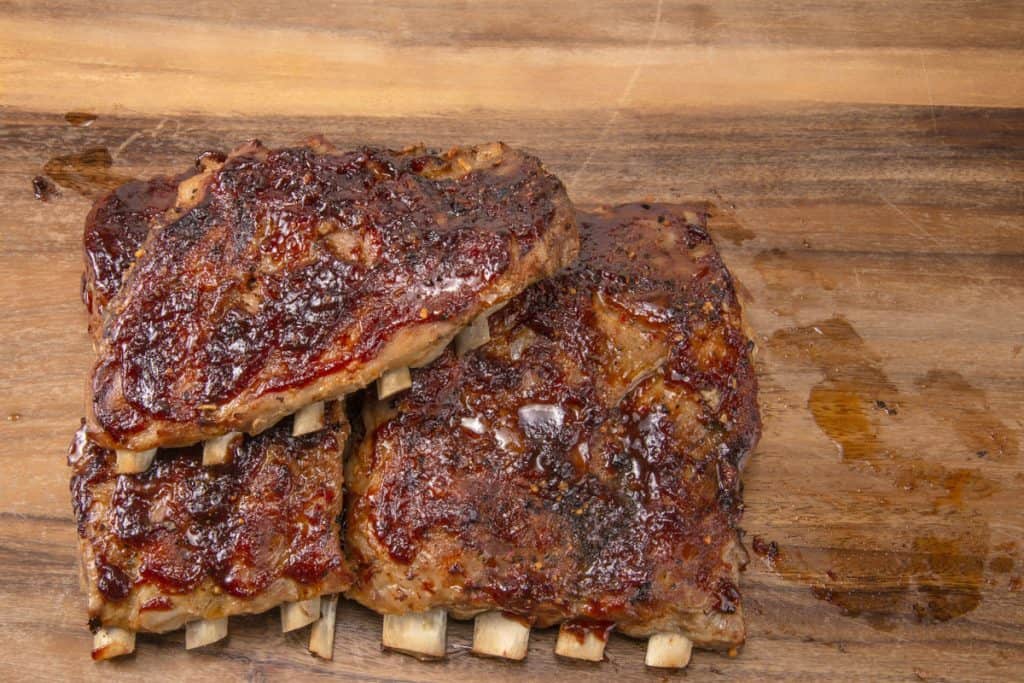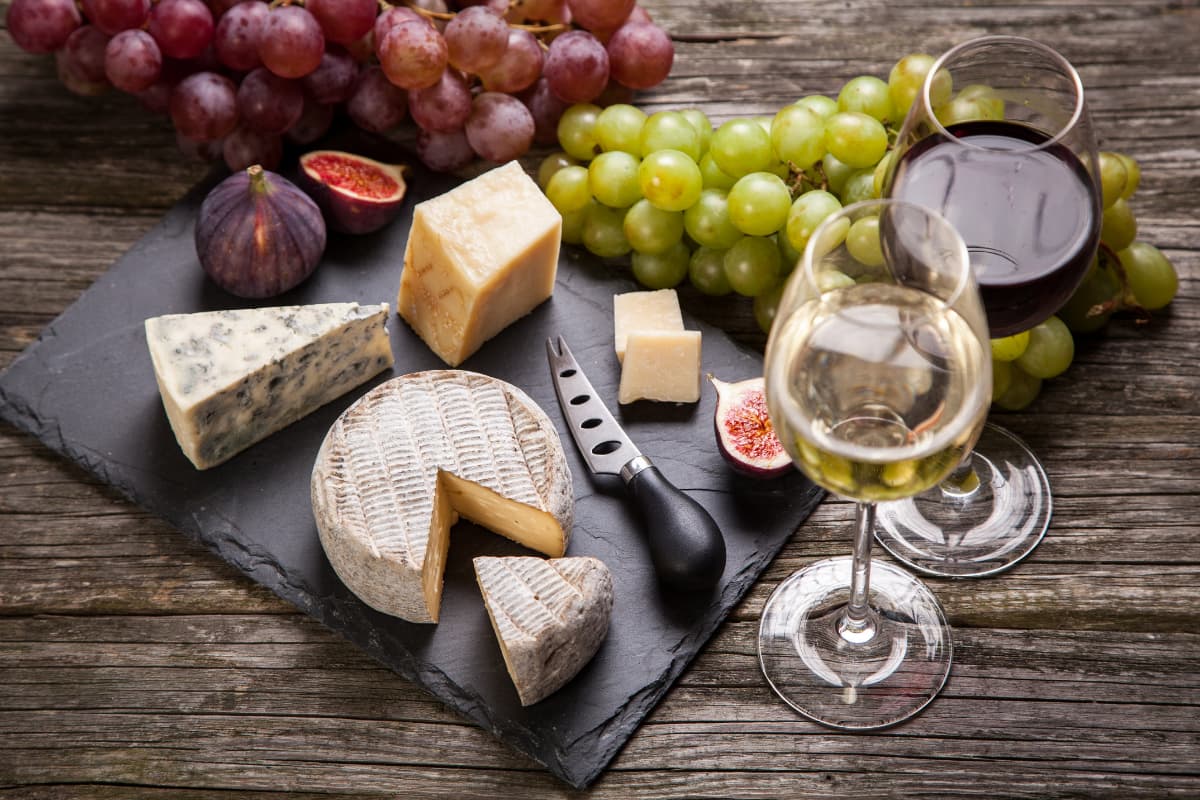Do you ever wonder what happens when you press down on a piece of meat while it’s being cooked? The seemingly innocent act of pressing on meat may have more significance than you may believe. We’ll look at the...
Do you ever wonder what happens when you press down on a piece of meat while it’s being cooked? The seemingly innocent act of pressing on meat may have more significance than you may believe.
We’ll look at the science behind grilling, how pressure affects meat’s taste, texture, and overall quality, and how it all relates to the cooking process in this article. You will discover how to enhance your grilling game by uncovering the impact of this common practice.
If you’re curious, we’ll show you how to push on meat while it’s grilling, giving you a better understanding of what is so important in this seemingly simple yet highly important aspect of the grilling process.
The Science Behind Grilling Meat
The science behind grilling meat encompasses a captivating blend of culinary artistry and the laws of thermodynamics. Understanding this intricate process isn’t merely about cooking meat; it’s about mastering the orchestration of heat, proteins, and flavors to craft a delectable gastronomic experience.
At its core, the grilling process involves the meticulous interplay of several key elements:
Heat Interaction and Its Culinary Alchemy
Grilling sets the stage for a captivating dance between heat and meat. As the flames lick the surface of the meat, a remarkable transformation begins. Proteins react to the intense heat, initiating the Maillard reaction—the magical process responsible for creating those coveted flavors and aromas. The sizzle and sear that accompany this reaction aren’t just sensory delights; they are the hallmark of a perfectly grilled piece of meat.
Understanding the Crucial Role of Temperature
The temperature at which meat is grilled isn’t a mere afterthought but a critical determinant of its outcome. From rare to well-done, achieving the desired level of doneness hinges on precise temperature control. The importance of using a thermometer to gauge the internal temperature cannot be overstated. It’s the compass guiding grillmasters towards the realm of culinary perfection.
Unveiling the Effects of Pressure on Cooking
While the sight of sizzling meat might tempt one to press it against the grill, understanding the repercussions of such actions is pivotal. Applying pressure to meat during the grilling process can alter its texture and expel precious juices, potentially leading to a drier and less flavorful outcome. Hence, restraint and finesse in handling the meat become paramount.
Navigating the nuances of grilling meat is akin to conducting a symphony—each element harmonizing with the next to produce a culinary masterpiece. From the careful application of heat to the delicate balance of time and temperature, mastering the science behind grilling meat elevates this seemingly simple act into an art form. It’s a culinary journey where precision, expertise, and a dash of creativity converge to create moments of savory delight.
Impact of Pushing on Meat While Grilling
The impact of pushing on meat while grilling is a pivotal yet often underestimated aspect that can significantly influence the final outcome of your culinary creation. This seemingly innocuous action can trigger a cascade of effects on the meat’s texture, juiciness, flavors, and even the overall cooking time. Understanding the consequences of applying pressure while grilling meat is essential for aspiring grillmasters seeking perfection in their culinary endeavors.
Understanding the Dynamics of Pushing on Meat
Pushing on meat during grilling might seem instinctive, but its implications go beyond mere physical interaction.
Effects on Meat Texture
The pressure exerted while grilling can alter the texture of the meat. Firmly pressing on meat can result in compression, potentially diminishing its tenderness. Conversely, a delicate touch allows the meat to retain its natural texture, ensuring a more palatable dining experience.
Influence on Meat Juices and Flavors
The succulence of grilled meat owes much to its juices locked within. Pushing on meat can force out these precious juices, leading to a drier and less flavorful outcome. The flavorful essence that keeps the meat moist and delectable might dissipate under excessive pressure.
Impact on Cooking Time
The time required to grill meat to perfection can also be affected by pushing. Exerting pressure might expedite the cooking process superficially, but it could compromise the meat’s internal doneness. Thus, understanding the correlation between pressure and cooking time is crucial for achieving the desired results.
Navigating the impact of pushing on meat during grilling demands finesse and discernment. Instead of haphazardly applying pressure, mastering the delicate balance of handling meat during the grilling process is the hallmark of a skilled grillmaster. By appreciating the nuances and effects of pushing on meat, one can elevate their grilling skills, ensuring each barbecued delight boasts exceptional taste and texture, captivating the taste buds of eager diners.
Techniques to Determine Meat Doneness Without Pushing
Determining the doneness of meat without resorting to the common practice of pushing is a refined skill that distinguishes a proficient grillmaster. While pressing on meat during grilling might seem instinctive, there are alternative techniques that can reliably ascertain whether the meat is perfectly cooked without compromising its texture or flavors. These methods not only ensure an exceptional dining experience but also preserve the meat’s succulence and taste.
Techniques to Accurately Gauge Meat Doneness:
A. Utilizing a Meat Thermometer
One of the most precise methods for determining meat doneness is using a meat thermometer. Inserting the thermometer into the thickest part of the meat provides an accurate reading of its internal temperature, allowing you to achieve the desired level of doneness – whether rare, medium, or well-done – with precision.
B. Relying on Visual Cues
Mastering the art of visual cues is another invaluable technique. Observing the color, texture, and juices of the meat serves as a reliable indicator of its doneness. For instance, a rare steak will typically be reddish-pink and soft, while a well-done piece tends to be firmer and have minimal pinkness.
C. Importance of Resting Meat After Grilling
Understanding the significance of allowing meat to rest post-grilling is crucial. Resting allows the meat’s juices to redistribute evenly, ensuring a more flavorsome and succulent dining experience. This critical step should not be overlooked, as it significantly impacts the overall quality of the meat.
By adeptly employing these alternative techniques, grillmasters can confidently determine the doneness of meat without resorting to the potentially detrimental practice of pushing. These methods not only guarantee a superior culinary outcome but also showcase the grillmaster’s expertise and finesse in handling and grilling meat to perfection.
Tips for Optimal Grilling Results

Image source: pinimg
Achieving optimal grilling results requires a blend of expertise, finesse, and an understanding of various factors that contribute to the art of grilling. These tips serve as a guiding compass for those aiming to elevate their grilling game and transform ordinary barbecues into culinary masterpieces.
A. Proper Meat Preparation Before Grilling
The foundation of a successful grill session begins with proper meat preparation. This involves essential steps such as marinating, seasoning, and ensuring that the meat is at the ideal temperature before it hits the grill. Patting meat dry before seasoning allows for better searing and caramelization, enhancing the flavors.
B. Adjusting Grilling Techniques for Different Types of Meat
Different meats demand distinct handling and grilling techniques. Understanding the nuances of each type of meat—be it beef, poultry, pork, or seafood—enables grillmasters to tailor their approach. For instance, high heat might suit beef steaks, while gentler heat is preferable for delicate fish fillets.
C. Understanding When and How to Flip Meat While Grilling
Flipping meat at the right intervals is crucial for even cooking. The general rule of thumb is to flip meat only once to ensure an evenly seared surface. However, thinner cuts might require more frequent flipping to prevent overcooking.
D. Other Factors Impacting the Grilling Process
Numerous variables can influence the grilling process, including ambient temperature, humidity, grill cleanliness, and even wind conditions. Keeping the grill clean, preheating it adequately, and accounting for external elements contribute significantly to consistent grilling results.
Grilling isn’t merely about applying heat to meat; it’s a fusion of culinary finesse and scientific precision. Embracing these tips can transform a novice into a seasoned grillmaster, adept at coaxing out tantalizing flavors and succulence from every grilled creation. Mastery of these nuances not only ensures gastronomic delight but also elevates the entire grilling experience, creating moments of culinary bliss for all who partake.
Best Practices for Grilling Different Types of Meat
Mastering the art of grilling different types of meat demands a nuanced approach, understanding the unique characteristics of each meat category, and applying specific techniques to achieve optimal results. These best practices encompass a diverse spectrum, catering to beef, poultry, seafood, and pork, ensuring that each type of meat undergoes the perfect grilling process, resulting in tantalizing flavors and succulent textures that tantalize taste buds.
A. Grilling Beef: Tips and Considerations
Choosing the Right Cuts: Different beef cuts require different grilling methods. For instance, tender cuts like ribeye benefit from quick, high-heat grilling, while tougher cuts like brisket or chuck roast excel with slow, indirect heat. Seasoning and Marination: Enhance the natural flavors of beef by marinating with spices, herbs, and seasonings before grilling to impart depth and richness.B. Grilling Poultry: Recommended Practices
Preparation is Key: Ensure poultry is thoroughly thawed before grilling to achieve even cooking. Consider brining for added moisture and flavor retention. Safe Cooking Temperatures: Poultry should reach an internal temperature of 165°F (74°C) to ensure it’s safe to eat.C. Grilling Seafood: Key Points to Remember
Delicate Handling: Seafood tends to cook quickly, so it’s crucial to monitor closely to avoid overcooking. Consider using a grilling basket for delicate fish fillets to prevent flaking.D. Grilling Pork: Techniques for Optimal Results
Utilizing Low Heat: Pork benefits from a slower cooking process to preserve tenderness. Indirect grilling or a two-zone setup is recommended to avoid charring.Navigating the subtleties of grilling different meats involves a blend of precision, experience, and an understanding of the unique characteristics of each protein. By tailoring techniques to suit the specific attributes of beef, poultry, seafood, and pork, grillmasters can unlock the full potential of each type of meat, transforming ordinary grilling sessions into extraordinary culinary experiences that delight the palate and elevate the dining experience.
Common Mistakes to Avoid While Grilling

Photo by: https://pinimg.com
Grilling, while seemingly straightforward, requires finesse and attention to detail. Avoiding common mistakes is crucial to ensure that the grill masterpieces turn out succulent and flavorsome. Recognizing and steering clear of these pitfalls can significantly elevate the grilling experience, resulting in restaurant-quality meals right from the backyard.
A. Over-Pushing or Pressing on Meat Excessively
Impact on Juiciness: Excessive pressing on meats leads to the loss of precious juices, contributing to dryness, and reducing tenderness. Distortion of Texture: Over-pushing results in a loss of texture, potentially causing the meat to lose its integrity and become unpalatable.B. Using Incorrect Grilling Temperatures
Under or Overcooking: Inaccurate temperatures can lead to undercooked or overcooked meats, affecting taste and potentially posing health risks. Failure to Achieve Desired Results: Not maintaining the right temperature can sabotage efforts, resulting in disappointing outcomes despite all other factors.C. Neglecting the Importance of Resting Meat after Grilling
Loss of Juices: Skipping the resting phase causes the juices to escape, making the meat less flavorful and succulent. Impact on Texture: The failure to rest meat after grilling leads to an uneven distribution of juices, affecting the texture and tenderness.Grilling novices and seasoned barbecue enthusiasts alike should heed these warnings to ensure an exceptional outcome. Each mistake has its consequences, compromising the quality of the grilled delicacies. Embracing a meticulous approach, from the selection of cuts to the handling of temperatures and the resting phase, is pivotal for a successful grilling experience. By avoiding these common errors, individuals can transform their grilling escapades into culinary triumphs, impressing taste buds and earning the title of the ultimate grill master.




![Business-Driven Marketing (BDM): 8 Steps to Drive Business Impact [+14 Templates]](https://gustdebacker.com/wp-content/uploads/2024/07/Business-Driven-Marketing-1024x576.png)










